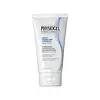What's inside
What's inside
 Key Ingredients
Key Ingredients

 Benefits
Benefits

 Concerns
Concerns

 Ingredients Side-by-side
Ingredients Side-by-side

Camellia Sinensis Leaf Extract
AntimicrobialPropanediol
SolventButylene Glycol
HumectantDiisostearyl Malate
EmollientCaprylic/Capric Triglyceride
MaskingButyrospermum Parkii Butter
Skin ConditioningPolyglyceryl-3 Methylglucose Distearate
EmulsifyingCetearyl Alcohol
EmollientNiacinamide
SmoothingMacadamia Ternifolia Seed Oil
EmollientWater
Skin ConditioningGlyceryl Stearate
Emollient1,2-Hexanediol
Skin ConditioningHydrogenated Polyisobutene
EmollientHydrogenated Poly(C6-14 Olefin)
EmollientHydrogenated Polydecene
EmollientDipropylene Glycol
HumectantPanthenol
Skin ConditioningPEG-100 Stearate
Tocopheryl Acetate
AntioxidantCetyl Palmitate
EmollientSorbitan Olivate
EmulsifyingSorbitan Palmitate
EmulsifyingHydroxyacetophenone
AntioxidantPolyacrylate-13
Palmitic Acid
EmollientStearic Acid
CleansingPolyisobutene
Theobroma Cacao Seed Extract
AntioxidantCarbomer
Emulsion StabilisingDextrin
AbsorbentTromethamine
BufferingAdenosine
Skin ConditioningCitrus Nobilis Peel Extract
MaskingCentella Asiatica Extract
CleansingMelia Azadirachta Leaf Extract
Skin ConditioningCupressus Sempervirens Leaf/Stem Extract
Skin ConditioningDisodium EDTA
Hedera Helix Leaf/Stem Extract
AntimicrobialCitrus Aurantium Bergamia Fruit Oil
MaskingPolysorbate 20
EmulsifyingSodium Hyaluronate
HumectantSorbitan Isostearate
EmulsifyingLactobacillus Ferment
Skin ConditioningSaccharomyces Ferment
Skin ConditioningLitsea Cubeba Fruit Oil
MaskingRibes Nigrum Leaf Extract
PerfumingPolygonum Cuspidatum Root Extract
AntioxidantScutellaria Baicalensis Root Extract
AstringentRosmarinus Officinalis Leaf Extract
AntimicrobialChamomilla Recutita Flower Extract
MaskingMelia Azadirachta Flower Extract
Skin ConditioningJasminum Officinale Flower Water
MaskingSalvia Officinalis Leaf Extract
CleansingGlycyrrhiza Glabra Root Extract
BleachingLavandula Angustifolia Flower Extract
CleansingMyristic Acid
CleansingLauric Acid
CleansingCamellia Sinensis Leaf Extract, Propanediol, Butylene Glycol, Diisostearyl Malate, Caprylic/Capric Triglyceride, Butyrospermum Parkii Butter, Polyglyceryl-3 Methylglucose Distearate, Cetearyl Alcohol, Niacinamide, Macadamia Ternifolia Seed Oil, Water, Glyceryl Stearate, 1,2-Hexanediol, Hydrogenated Polyisobutene, Hydrogenated Poly(C6-14 Olefin), Hydrogenated Polydecene, Dipropylene Glycol, Panthenol, PEG-100 Stearate, Tocopheryl Acetate, Cetyl Palmitate, Sorbitan Olivate, Sorbitan Palmitate, Hydroxyacetophenone, Polyacrylate-13, Palmitic Acid, Stearic Acid, Polyisobutene, Theobroma Cacao Seed Extract, Carbomer, Dextrin, Tromethamine, Adenosine, Citrus Nobilis Peel Extract, Centella Asiatica Extract, Melia Azadirachta Leaf Extract, Cupressus Sempervirens Leaf/Stem Extract, Disodium EDTA, Hedera Helix Leaf/Stem Extract, Citrus Aurantium Bergamia Fruit Oil, Polysorbate 20, Sodium Hyaluronate, Sorbitan Isostearate, Lactobacillus Ferment, Saccharomyces Ferment, Litsea Cubeba Fruit Oil, Ribes Nigrum Leaf Extract, Polygonum Cuspidatum Root Extract, Scutellaria Baicalensis Root Extract, Rosmarinus Officinalis Leaf Extract, Chamomilla Recutita Flower Extract, Melia Azadirachta Flower Extract, Jasminum Officinale Flower Water, Salvia Officinalis Leaf Extract, Glycyrrhiza Glabra Root Extract, Lavandula Angustifolia Flower Extract, Myristic Acid, Lauric Acid
 Reviews
Reviews

Ingredients Explained
These ingredients are found in both products.
Ingredients higher up in an ingredient list are typically present in a larger amount.
This ingredient is also known as shea butter. It is an effective skin hydrator and emollient.
Emollients help soothe and soften your skin. It does this by creating a protective film on your skin. This barrier helps trap moisture and keeps your skin hydrated. Emollients may be effective at treating dry or itchy skin.
Shea butter is rich in antioxidants. Antioxidants help fight free-radicals, or molecules that may harm the body. It is also full of fatty acids including stearic acid and linoleic acid. These acids help replenish the skin and keep skin moisturized.
While Shea Butter has an SPF rating of about 3-4, it is not a sunscreen replacement.
Shea butter may not be fungal acne safe. We recommend speaking with a professional if you have any concerns.
Learn more about Butyrospermum Parkii ButterThis ingredient is an emollient, solvent, and texture enhancer. It is considered a skin-softener by helping the skin prevent moisture loss.
It helps thicken a product's formula and makes it easier to spread by dissolving clumping compounds.
Caprylic Triglyceride is made by combining glycerin with coconut oil, forming a clear liquid.
While there is an assumption Caprylic Triglyceride can clog pores due to it being derived from coconut oil, there is no research supporting this.
Learn more about Caprylic/Capric TriglycerideCarbomer is a polymer of acrylic acid. Its main role is to create a gel consistency.
A high amount of carbomer can cause pilling or balling up of products. Don't worry, most products contain 1% or less of carbomer.
Water. It's the most common cosmetic ingredient of all. You'll usually see it at the top of ingredient lists, meaning that it makes up the largest part of the product.
So why is it so popular? Water most often acts as a solvent - this means that it helps dissolve other ingredients into the formulation.
You'll also recognize water as that liquid we all need to stay alive. If you see this, drink a glass of water. Stay hydrated!
Learn more about Water